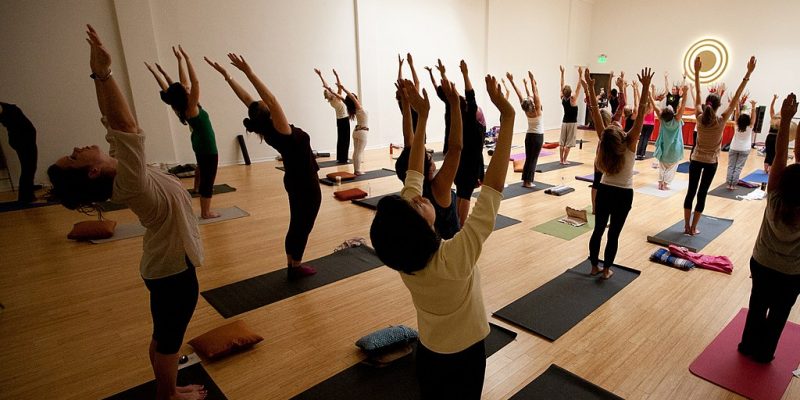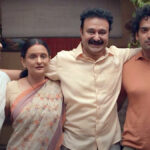In September 2015, the department of personnel and training recommended the Ministry of Youth Affairs and Sports to recognise yoga as a sport. However, in November 2016, the decision was reversed by the sports ministry.
This reversal came after consultation between officials from the Ministry of AYUSH (Department of Ayurveda, Yoga and Naturopathy, Unani, Siddha and Homoeopathy) and the department of personnel and training. The reasons given for the reversal were put down to yoga’s limbs being too varied for it to become part of a competitive sport and the fact there was no national federation specifically for yoga.
What is confusing is how the minister of state for youth affairs and sports, Vijay Goel, announced in 2017, “Yoga has also been recognised as a non-Olympic sports discipline by the International Non-Olympic Committee, considering its importance in day-to-day life on the occasion of its golden year, 2017. I extend my best wishes to the International Yoga Committee for the success in its endeavours.” This memorial poster was created for the occasion.
In August 2020, the National Yoga Sports Federation (NYSF) was established, which the Ministry of Youth Affairs and Sports recognised in November 2020. The intention was to promote and develop yogasana as a competitive sport. To make yoga a sport, seven of the eight classically interpreted limbs were amputated, leaving behind only the postural component (asana).
A sport or spiritual practice?
What is intriguing about this is that there is a common opinion within ‘yogaland’ that asana alone does not constitute yoga and that a yoga lifestyle is ultimately incomplete if someone only attends to a yoga practice that stops at stretching.
Also read: The Myth of ‘Sanskrit Villages’ and the Realm of Soft Power
Without getting into too much strife and getting distracted by all the things that people come to think “yoga” is or is not, let us assume we are talking about the same thing. Let us consider that yoga generally relates to people doing something with their bodies and minds and souls, which likely involves endorphin releasing experiences facilitated by physical exercise, deep breathing, moving in unison with a group of people, while rounding out with some relaxation.
Yet, while this perceived feeling of the boundary between oneself and everyone else possibly dissolving may be a sign of something numinous, cessative, spiritual…but possibly not religious… it is, nonetheless, an experience grounded in physiological fact. It might be the transposition of spiritual opinion, albeit a subjectively real one, though it is difficult to know, since there is no way to test the subjective, interior, sacred world of someone’s innermost recesses.
Many so-called self-proclaimed protectors of a generally imagined authentic and traditional yoga argue that a postural focused yoga practice is incomplete at best and a neo-colonial appropriation at worst. Perhaps the special knowledge gained from a perceptibly more complete yoga practice, which is said to consist of all eight limbs of Patanjali’s yoga sutras, enables clearer vision into the souls of all who prefer any number of yoga hybrids.

The yogasutra is an ancient Hindu text on Yoga philosophy. Photo: Sarah Welch/ CC BY-SA 4.0/Wikimedia Commons
Perhaps, it comes down to taxation.
Like the conversation from Washington, DC, back in 2014, when a certain “yoga tax” was imposed on studios, which the government had deemed to be health clubs. In response, opposition grew around the opinion that yoga offers more than just health and that wellness shouldn’t be taxed, even though these are registered for-profit businesses. Is yoga something to be taxed? Is yoga a religion?
Litigation has ensued over this very issue in relation to yoga’s perception as a religion being publicly funded and taught in schools. An article by Geiza M. Timčák on Yoga as part of Sanātana Dharma covers a lot of ground in a few pages on the issues of defining both religion and yoga.
On December 16, 2020, the AYUSH ministry streamed a press conference on #Yogasana as a competitive sport. This event included some yogasana demonstrations and explanations by key officials as to what a yoga sport means. The image below provides a clear picture of what yoga apparently is and how it has been amputated for sport, profit and symbolic capital.

Photo: National Yogasana Sports Federation (NYSF)
What it appears to be is an attempt to commodify Yoga through sporting competitions.
This is made clear in the NYSF’s vision statement, which is: “To build and market the brand of yogasana through sustainable and scalable development and a competition structure that benefits the athletes, officials and the sport through NYSF.” This combines with the mission statement, which is: “To gain an athlete-base across 600 districts across age, religion, gender and social standing that will allow us to build the brand value of more than Rs 1,000 crore in the next five years (approximately $136 million).”
These guide the objectives, of which creating broadcast-friendly packaging of the sport into leagues, shows and competitions is paramount, particularly the establishment of a “Yoga Super League” through which broadcasting rights, marketing and selling intellectual property are the most intriguing.
Yoga and its origins
Putting to the side the unreliable 5,000 year date for yogasana’s origins, a curious historical timeline is curated by these united ministries explaining how yoga competitions were apparently occurring 2,000 years ago but the present form of yoga competition is only 200 years old.
However, the NYSF’s date of 2,000 years for competitive yoga is at odds with AYUSH’s date of 5,000 years. It appears as well that the assumption is that the earlier competitions included all of the other limbs of yoga. However, this is not made explicit.
The NYSF’s home page, however, explains that “the culture of yoga originated in the Indus Saraswati valley civilisation – dating back to 2,700 BC; and has provided both, material and spiritual upliftment of humanity.” In concert, the Ministry of External Affairs (MEA) provides a similar narrative, according to reports from Ishwar V. Basavaraddi, director of the Morarji Desai National Institute of Yoga and president of the NYSF.
Unsurprisingly, it relates the origins, history and development of yoga to this Harappan seal.

Male figure in a “yogic” posture resembling Mulabandhasana, surrounded with animals, resonating with the images of the later Hindu god Shiva. Impression of the Pashupati seal from the Indus valley Civilization. Photo: Ismoon (talk)/CC0/Wikimedia Commons
Arathi Menon presents a balanced overview of the controversy around this seal. However, emeritus professor, Asko Parpola, explains how this iconic image, which is considered by many people to represent ‘Proto Śiva,’ is found in the Corpus of Indus Seals and Inscriptions and is identified by the code M-304. Yet, something that is not discussed is how it relates to seals M-305 to M-308, and M-490 and M-491, which are shown below.

Parpola argues that M-304 is a Harappan anthropomorphic representation influenced by proto-Elamite engravings which are related to the ‘sitting bulls.’ This argument is based on comparing iconographic evidence of royal rites. Parpola argues for a strong west Asian religious and cultural influence upon the Indus civilisation, which passed from the Harappans to the subsequent Vedic culture and later South Asian religions. It is worth quoting Parpola at length.
According to Vedic texts, the chief queen represented goddess earth identified with Vāc, ‘sound’, the invincible goddess of victory, addressed as ‘lioness’ (siṃhī) and ‘water buffalo cow’ (mahiṣī). Mahiṣī, literally ‘the great female’, was also the official title of the chief queen, suggesting that his mate, the sacrificing king (represented by the victim-bridegroom) was mahiṣa, ‘water buffalo bull’.
The famous Harappan deity depicted on an Indus seal (M-304) from Mohenjo-daro and called ‘Proto-Śiva’ by Sir John Marshall, wears the horns of the water buffalo. […] The horse – which did not exist in the Indus Valley before it was introduced after 2000 BC – replaced its Harappan predecessors as the foremost sacrificial vision as the most important animal of the immigrating Indo-Aryan speakers.
The Vedic horse or human sacrifice (and its less elaborate version in the Vedic New Year festival called mahāvrata) replicates all essential elements of the Sumero-Akkadian New Year festival, which culminated in the ‘sacred marriage’ of Inanna-Ishtar, the goddess of fertility and the goddess of victory. Her lover, who was put to death, was identified with the king but represented by a substitute.
In Vedic India and in Mesopotamia, the New Year festival of the goddess was associated with military expeditions. The image of a ‘unicorn’ bull carried on top of a high pole in a late early dynastic panel illustrating a victory parade excavated at the Ishtar temple of city of Mari in Syria is replicated in two tablets (M-490, M-491) from Mohenjo-daro, which illustrate a parade of men carrying stands topped by various things, among them a ‘unicorn’ bull. Images of bulls are still brought in procession as offerings to temples in South India, and military parades form an important component of the yearly festivals of the Hindu Goddess of Victory.
Potential opportunities
The International Non-Olympic Committee (INOC) is an international platform for non-Olympic sports, which manages the International Yoga Committee (IYC). Mohammed Seraj Ansari is the president and Thiyagu Nagaraj is general secretary of IYC.
Also read: Face Yoga and the Curious History of the Art of Skin Whitening
Mohammed Ansari aims for the creation of a high-level National Yoga Sport Federation in each country of the world under the aegis of IYC to run yoga as sport in their countries. He believes that “the yogasanas as an Olympic event would create a widespread opportunity for expanding awareness of yoga and its myriad health benefits.”
The International Yoga Sport Federation (IYSF) is currently working on meeting the criteria for inclusion in GAISF (Global Association of International Sports Federation), which is the first step to becoming an Olympic sport. This requires meeting several criteria, including unifying 40 active federations spread on five continents, regular national and international competitions, and developing rules and regulations and IYSF’s own educational programme for coaches, judges and athletes.
“IYSF will unite and assist its official members and oversee all IYSF yoga sport competitions worldwide, fully adhering to the principles of World Anti-Doping Convention and Fair Play as any other sport governing body on its way towards the inclusion as an Olympic sport,” the federation states.
While archaeological evidence, as compelling as it is, does not deter the notion that yoga is, like many other things, 5000 years old, many people do seem to take this date quite literally. It is a curious thing how yoga has amputated seven of its eight limbs to become a sport and help the nation prosper and profit through selling television rights to yoga competitions and Super Leagues.
Though, somehow it manages to retain being yoga and unlike the perception that postural focused wellness outside of competition is somehow not yoga. What is altogether fascinating is the similarity yoga’s biography now has with Sanskrit, which many incorrectly consider to be the “mother of all languages.”
Sanskrit only has genetic relations with languages in the Indo-European family, of which it is not the oldest in this family and likely has correspondence with proto-Elamite, just like proto-Śiva. As well, there are about 90 other unrelated language families around the world.
Nonetheless, in the span of only five years, yoga has gone from being a sport to not being a sport to again becoming not just a sport, but, at least, according to Mohammed Seraj Ansari, it is the “mother of all sports.”
Patrick McCartney, PhD, is a Research Affiliate at the Anthropological Institute at Nanzan University, Nagoya, Japan. He is trained in archaeology, anthropology, sociology, and historical linguistics. His research agenda focuses on charting the biographies of yoga, Sanskrit and Buddhism through a frame that includes the politics of imagination, the sociology of spirituality, the anthropology of religion, and the economics of desire. His work can be found here.




